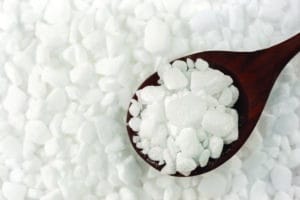
Water softeners increase the sodium level of your drinking water. The ion-exchange softening process removes some salts and adds others, resulting in no additional salt content. Sodium levels depend on water hardness. In Lancaster County, six to seven 8 oz. glasses of water equals the sodium level in one slice of whole wheat bread. If you are on a low-sodium diet, the addition of a reverse osmosis system can eliminate all sodium from your drinking water.
Softened water leaves a film on your skin. It is true that your skin will feel different with soft water. By removing unwanted hard minerals from your water, your skin is actually cleaner. The “slick” feeling is your soap moisturizing your skin as intended. You will also notice that your soap and shampoo will be much more sudsy.
Water can be softened without the use of salt. Systems that advertise salt-free softening are actually referred to as scale-inhibitors. They proclaim to reduce scale buildup in your pipes and appliances but provide you with none of the benefits of a water softener and do not remove harmful minerals from your water.
Water softeners are expensive to continually run. While running a water softener does require additional electricity (about the same amount as an electric clock), softer water allows you to save money elsewhere. With soft water, your personal and household cleaning solutions – detergent, body wash, dish soap – last much longer. In addition, soft water extends the life of anything you launder, including clothing, towels and bedding. Soft water also allows your water heater and dishwasher to run more efficiently.
Softened water will damage my house plants and lawn. Just like your drinking water, the amount of salt is low and will not damage your lawn or plants.
If you suspect you have hard water, contact Haldeman Mechanical for a free hard water evaluation, as well as free tests for other treatable water conditions, and to discuss the right water softener option for your home.
